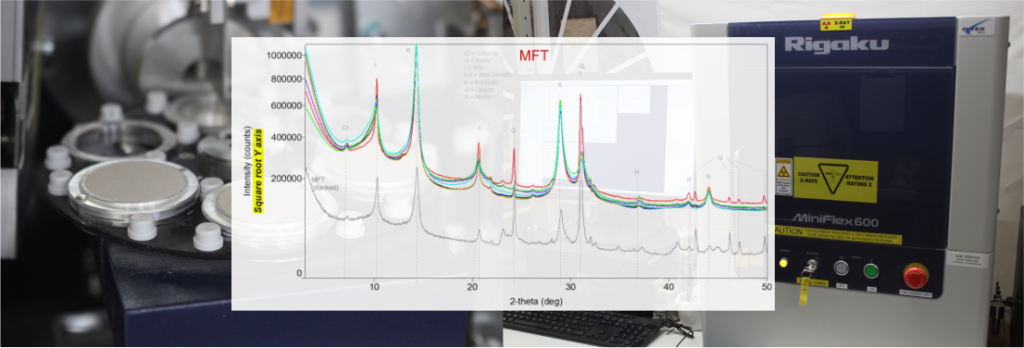quantitative answers
Analytical chemistry measurements and techniques provide quantitative results and answers to complex questions. Our broad suite of equipment, expertise and methodologies, as well as recent projects are outlined below.
ASTM methodology forms the basis for each of our tailored analytical approaches, each procedure is configured to achieve the precision and accuracy our clients rely on us to provide. By hosting state-of-the-art Gas Chromatography with Mass Spectrometry, standard Flame Ionization, and Thermal Conductivity Detectors we can provide detailed compositional analysis results. We customize our sample extraction and handling techniques to deal with difficult sample matrices.
Our experienced team frequently develops non-standard analytical methods to tackle difficult industrial issues; from sample handling through to analysis, Coanda’s Analytical Laboratory Team leverages the flexibility of research investigation to support routine analysis techniques in finding the right solution to our clients’ questions.
Analytical Techniques and Capabilities
Coanda’s analytical capabilities include a suite of industry-standard analyses. These techniques provide results to clients in mining and tailings-related sectors and can readily be adapted to handle sample types and matrices found in a wide range of other industries.
- Detailed Hydrocarbon Analysis by GC-FID/Mass Spectrometry
- Naphtha Diluent Solvent Content in Tailings by GC-FID
- Pentane Diluent Solvent Content in Tailings by GC-FID
- Simulated Distillation by GC-FID
- Anion and Cation Analysis by Ion Chromatography
- Carbon and Nitrogen Quantification by TOC Analyzer
- Rapid Toxicity Testing by Luminometer
- Clay Content by X-Ray Diffraction (XRD)
- Clay Content by Methylene Blue Titration
- Solids – Bitumen – Water (SBW) content by Solvent Reflux
- Vapour-Liquid Equilibrium
- Water Content by Karl Fischer
- Permanent gasses and C1-C5 by microGC
- Sulphide content by UVVis
- Bitumen Content by UVVis

Recent Projects Synopses
Over the past quarter of a century we have carried out countless projects involving advanced measurements and characterization. Below are a few examples of the types of samples and studies we can carry out to bring clarity to our clients, and allow them to make the right decisions based on the right results:
- Kinetic study of sulfide in diluted tailings – read more
- In-situ analysis of permanent gases in active microbial consortia – read more
- Detailed hydrocarbon characterization of affected Mature Fine Tailings (MFT) – read more
- Online measurement for diluent solvent in tailings – read more
- Molecular identification of complex organic compounds in aqueous samples – read more
- Universal protocol for the measurement of hydrocarbons in complex tailing samples – read more
- Instrumentation validation and customized method development of Clay Identification and Quantification – read more
- Vapour-Liquid Equilibria of Oilsand Tailings – read more
Project Details
A brief overview of each of the above projects is outlined below:
-
Analytical technique design for the kinetic study of sulfide in diluted tailings by UV-Vis. Custom apparatus design and analytical methodology developed to determine the rate of disappearance of sulfide in various chemical environments. the results were used to size commercial equipment including support for in-line instrumentation validations. back to project list

UV-Vis Measurements
-
Custom designed in-situ analysis of permanent gases (O2, N2, CH4, CO2, H2S, C1 to C5) for the continuous quantification of metabolic product of active microbial consortia. data collected tracked concentration changes over time with ensuring sample integrity and preserving data quality drawing upon the capabilities of a microGC. back to project list
-
Development of an analytical method for detailed hydrocarbon characterization and study of affected Mature Fine Tailings (MFT) in the diluent solvent range. Compound identification and hydrocarbon quantification was supported by Gas Chromatography – Mass Spectrometry, and Principal Component Analysis (PCA) was used to identify chemical changes arising as a result of the biological process studied. back to project list

Hydrocarbon Quantification by Principal Component Analysis (PCA)
-
Feasibility study of online measurement sensor for diluent solvent in tailings, identifying operating variables and constraints which may impact the quantification process. Sensor results were validated against sample analysis using Gas Chromatography – Flame Ionization Detector capabilities and in-house sample extraction techniques. back to project list
-
Process troubleshooting through molecular identification of complex organic compounds in aqueous samples by Gas Chromatography – Mass Spectrometry. Determination and interpretation of main structural features and functional groups of analytes resolved by GC-MS, and abundancies compared for semi-quantitative analysis. back to project list

Gas Chromatography – Mass Spectrometry
-
Development of an approved and universal protocol for the measurement of hydrocarbons in complex tailing samples. This method is reproducible, reliable, and robust for the quantification of diluent solvent found in small sample sizes and can now be found across the industry and third-party vendors. back to project list
-
Instrumentation validation and customized method development of Clay Identification and Quantification by X-Ray Diffraction (XRD) analysis, supporting client lab operations in the mining and energy sector. Unique sample preparation techniques were developed, applied to a large-scale sampling survey, resulting in the generation of a rich database of clay minerals that is utilized for clients mining operations. This Clay Content by XRD analysis uses less sample and provides a more precise and detailed measurement compared to routine colorimetric clay measurements. back to project list

X-Ray Diffraction Analysis of Mature Fine Tailings (MFT)
-
Vapour-Liquid Equilibria of Oilsand Tailings utilizing the VLE apparatus and subsequent analysis which was used to generate compositional data of the equilibrium gas and liquid phases of samples. The results were used to derive a thermodynamic model and evaluate solvent recovery as a function of operating conditions, including temperature and composition. back to project list

Vapour Liquid Equilibrium Analysis
Further details and information about our equipment and capabilities are listed in our Analytical Laboratory page.
If you are facing a challenging measurement hurdle, get in touch. Solving the unsolvable is our specialty!

